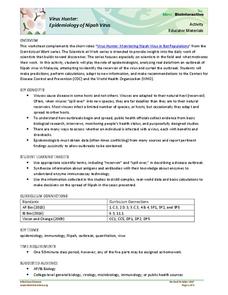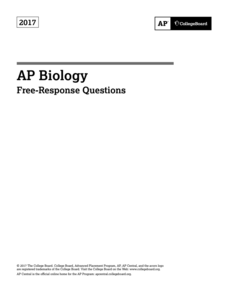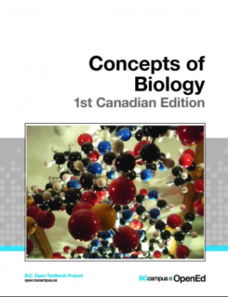Rensselaer Polytechnic Institute
Molecules to the Max!—Teacher's Discovery Guide
Molecules to the Max! refers to a movie released in 2009 about the world of atoms and molecules. A helpful discovery guide provides five posters on science topics typically covered at the middle school level. It also explains the...
Beyond Benign
Lucky Brand Genes: Chromosome Cookies
Mutations are not just deformed creatures we see in movies—they happen every day! Scholars study the different types of genetic mutations in the 12th installment of a series of 18 lessons. A creative activity uses candy and other food...
Beyond Benign
Lucky Brand Genes: Genetic Traits
Explore single-gene traits in humans. After viewing a video introducing genetic vocabulary, individuals identify their phenotype and possible genotypes of specific traits. They consider both dominant and recessive traits. This is the...
Beyond Benign
What is Biotechnology
Examine the sequence of key events in the history of genetics. An engaging lesson asks scholars to sort events to create a timeline of biotechnology milestones. Arranging the events gives learners a perspective on the development of...
Beyond Benign
Kitten Creation
Your pupils become geneticists as they create cat offspring. The next instructional activity in a series continues an exploration of genetic makeup as scholars consider parent traits to build their offspring. Using household items, they...
Cornell University
Bacteria Take Over and Down
Bacteria outnumber all other forms of life on Earth. Scholars observe the growth of bacteria in petri dishes to understand their role in maintaining good health. Then, they observe the growth of bacteria after they introduce...
K20 LEARN
It's Alive! Or, Is It?
Seems like a fairly simple question—until you begin asking your class! Get pupils acquainted with the characteristics of life through pairs classification, discussion, and scientific reading. The lesson plan, part of the K20 series, also...
K20 LEARN
You're My 'Karyo'-Type: Karyotype For Chromosomal Disorders
What's your type? Genetically speaking, of course! Immerse your class in the world of karyotypes through an insightful activity from the K20 Center. Scholars take on the role of genetic counselors to determine the karyotype of offspring...
Howard Hughes Medical Institute
Virus Hunters: Epidemiology of Nipah Virus
Who actually goes looking for a virus? Expose your class to the high-stakes life of an epidemiologist on the trail of the Nipah virus. Pupils engage in a short video, then examine how scientists predict, model, and find the source of...
Howard Hughes Medical Institute
Ebola: Disease Detectives
How did the Ebola virus first infect humans? Young virologists examine genetic sequences from the 2014 Sierra Leone outbreak to find similarities during a riveting activity. Following similar methods used by MIT and Harvard, partners...
Howard Hughes Medical Institute
Visualizing Gene-Expression Patterns
How do genetics gurus know so much about gene expression? See traits materialize before your very eyes using a presentation with embedded simulations. Science scholars develop an understanding of the techniques used to follow the work of...
Biology Junction
Characteristics of Life
Life exists in many different forms from tiny nanobes to the Humongous Fungus, the largest form of life. Scholars learn the definition of life and the shared characteristics of these greatly varied organisms. They demonstrate knowledge...
Serendip
Mitosis, Meiosis and Fertilization Vocabulary Review Taboo Game
Can you describe a gamete without using the words sperm or egg? Scholars play a vocabulary review game where they try to get other players to guess their words. Each card has the target word as well as two related words they must not...
Howard Hughes Medical Institute
Lactose Intolerance: Fact or Fiction
Around the world, about 2/3 of adult humans are lactose intolerant. Scholars work in small groups to discuss a few statements about lactose intolerance. Then, they watch a video on the topic and readdress each statement. Whole-class...
College Board
2017 AP® Biology Free-Response Questions
With AP Biology remaining the most popular AP science exam, many teachers need help preparing. The College Board offers the actual free-response questions from the 2017 test covering pollination, germination, and more. Scholars learn the...
College Board
2016 AP® Biology Free-Response Questions
A remarkably high number of scholars passed the AP Biology exam in 2016 with over 61 percent earning college credit. The College Board released the entire free-response section for future scholars to study. After answering the eight...
Agriculture in the Classroom
Roll of the Genes
Animal reproduction in sheep and cattle is explored with the help of Punnet squares. Scholars employ tools using probability to conclude the color of wool a sheep's offspring will have. Acting as animal geneticists, pupils then take...
BC Open Textbooks
Concepts of Biology – 1st Canadian Edition
How diverse are living things? Individuals explore topics such as cells as the foundation for life, cell division and genetics, molecular biology, and animal reproduction using an open resource Biology textbook. They learn key terms...
College Board
AP Biology Practice Exam 2013
What is the best way to prepare for an AP® exam? Learners become familiar with the AP® Biology exam by completing a full-length practice exam. The AP® test prep by the College Board contains multiple choice, grid-in, and free-response...
A Mighty Girl
Rosalind Franklin
Rosalind Franklin, the Dark Lady of Science, is featured in an intriguing poster that is sure to inspire young scientists.
PBS
Genes 101: Life’s Instruction Manual | UNC-TV Science
Discover the common genetic ground shared by humans and chickens. Group members listen and view an animation about genes and proteins, which details their roles in building biological structures such as tissues and organs. Participants...
Curated OER
Condon Bingo
Students use COndon Bingo to decipher genetic codes. Students practice transcription and translation of codons while playing the game. They enjoy playing the game, while actively participating. Students develop an increase proficiency...
Curated OER
Viruses
In this viruses learning exercise, students will read the 5 steps of the lytic cycle and then label those steps on a diagram starting with the virus attaching to a cell and ending with the cell opening and releasing the replicated viruses.
Curated OER
Cutt-Off Genes
Students explore how gene sequence analysis can be used to examine phylogenetic similarities of different organisms. Students work in groups to simulate a gel electrophoresis separation of fragments using poster board to create their gel.
Other popular searches
- Dna Replication
- Dna Structure
- Dna Fingerprinting
- Dna Models
- Dna Replication Worksheet
- Dna Sequencing
- Dna Extraction
- Dna Technology
- Recombinant Dna
- Dna Mutations
- Dna Structure Worksheet
- Mitochondrial Dna

























